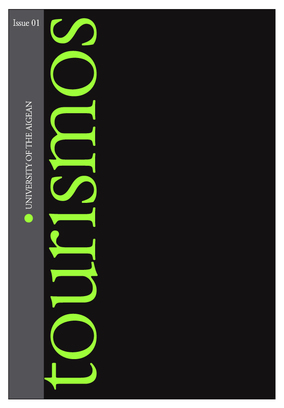Positioning and branding a wilderness tourist attraction to meet all stakeholders objectives
Part of : Tourismos : an international multidiciplinary journal of tourism ; Vol.8, No.3, 2013, pages 129-150
Issue:
Pages:
129-150
Section Title:
Research papers
Author:
Abstract:
The Beartooth Nature Center (BNC) is Montana’s premier wildlife educationrefuge. Home to over seventy wild animals unable to be returned to their naturalenvironments after accidents or abandonment, the BNC houses mountain lions,bears, moose, bobcats, and a variety of large birds. Located in Red lodge,Montana, the northern gateway to the world- renowned Yellowstone NationalPark, the BNC is in a unique position to create greater awareness of importantecological and wilderness sustainability issues for. Primarily funded throughdonations from tourists and local residents, effective branding and marketing arecrucial for its survival. This article presents a 2011 student-driven branddevelopment and marketing campaign designed to create greater visibility andname recognition for the BNC. Using contemporary theories which emphasizethe importance of including all stakeholders in the branding process, studentscreated a brand-positioning television and targeted collateral campaign. As aresult of this campaign, attendance at the BNC doubled the following summer.This case study confirms that bringing multiple stakeholders into the brandingprocess is a highly effective way to create a powerful message for eco-touristdestinations.
Subject (LC):
Keywords:
positioning and promotion campaign, stakeholders, destination branding, eco-tourism, wilderness sustainability
Notes:
Περιέχει σχήματα, πίνακες και βιβλιογραφία, Ειδικό αφιέρωμα: Tourism destination marketing & management
References (1):
- Aker, J.L. (1997) Dimensions of Brand Personality, Journal of MarketingResearch, 34, 347Bagozzi, R. & Dabholkar, P., (2000) Discursive psychology: An alternativeconceptual foundation to means–end chain theory, Psychology &Marketing, 17, 535–586Buhalis, D. (2000). Marketing the competitive destination of the future, TourismManagement, 21, 97–116Clark, J., Clark, A., & Jones. (2010). Branding Smaller Destinations with LimitedBudgets: Athens Georgia, Journal of Hospitality Marketing andManagement, 5(15), 366Daye, M. (2010). Challenges and Prospects of Differentiating Destination Brands: Dutch Caribbean Islands, Journnal of Travel and Tourism Marketing,27(1), 1-13Dearden, P. & Rollins, R. (2009). Parks and protected areas in Canada: Planningand management(3rd ed.). Don Mills, Ontario: Oxford University Press.Donohoe, H. (2012). Of community-based tourism: Re-thinking the relationshipbetween tour operators and development agents as intermediaries in ruraland isolated area communities, Journal of Sustainable Tourism, 10(3), 191–206.Dredge, D. (2005). Local versus state-driven production of ‘The Region’:Regional tourism policy in the Hunter, New South Wales, Australia, NewRegionalism in Australia, 301–319.Dredge, D. & Jenkins, J. (2003). Destination place identity and regional tourismpolicy, Tourism Geographies, 5(4), 383–407.Dredge, D. (2001). Leisure lifestyles and tourism: Socio-cultural, economic andspatial change in Lake Macquarie, Tourism Geographies, 3(3), 279–299Durie, A., Yeoman, I. & McMahon-Beattie, U. (2006). How the history ofScotland creates a sense of place, Place Branding, 2(1), 43–52Fyall, A. & Garrod, B. (1998). Heritage tourism: At what price? ManagingLeisure, 3, 213–228Gill, A. (2004). Tourism communities and growth management, A companion totourism, 569–583, Maldon, MA: Blackwell Publishing.Gnoth, J. (2007). The structure of destination brands: Leveraging values, TourismAnalysis, 12(5–6), 345–358Hall, C. (2007). Introduction to tourism in Australia: Development, issues andchange (5th ed.). French Forest: Pearson Education Australia. Marketing,10(2), 109–121.Hanna, S. & Rowley, J. (2010),Towards a strategic place brand-managementmodel. Journal of Marketing Management, 27,258-476Hankinson, G. (2012). The Measurement of brand orientation, its performanceimpact and role of leadership in destination branding, Journal of MarketingManagement, 28, 974-999http://www.heritagedestination.com/facts-figures.aspxJamal, T. & Getz, D. (1995). Collaboration theory and community tourismplanning, Annals of Tourism Research, 22(1), 186–204Jamal, T. & Getz, D. (1999). Community roundtables for tourism-relatedconflicts: The dialectics of consensus and process structures, Journal ofSustainable Tourism, 7(3–4), 290–313Kavaratzis, M. & Ashworth, G. (2005). City branding: An effective assertion ofidentity or a transitory marketing trick? Economische en Sociale Geografie,96(5), 506–514Keller, K. (1993). Conceptualizing measuring and managing consumer basedbrand equity, Journal of Marketing, 57, 1-22Lane, B. (2009). Implementing sustainable tourism in Scotland, Journal ofSustainable tourism, 17(6), 747-752Marcouiller, D. (2007). “Boosting” tourism as rural public policy: Panacea orPandora’s Box? The Journal of Regional Analysis and Policy, 37(1), 28–31Morgan, A., & Pritchard, R. Pride. (2010). Destination branding: Creating theunique destination proposition, Journal of Promotion Management, 66–86Rogerson, C. (2010). Adventure Tourism in Africa: Zambia. Geography, 89(2)183Rosaria, L., Pereira, G., Correia, L. & Schuta, R. (2012). Destination Branding: ACritical Overview. Journal of Quality Assurance in Hospitality, 12, 81-102Ryan, C., & Zahra, A., (2004). The political challenge: The case of NewZealand’s tourism organizations. Brand culture. Oxon, UK: Routledge.Salzer-Mörling, S & Strannegård, L, (2004),"Silence of the brands", EuropeanJournal of Marketing, Vol. 38 Iss: 1 pp. 224 - 238Shone, M. (2009). Changing paradigms: The case of tourism and development inthe Hurunui District, New Zealand. Paper presented at the CAUTHE 2009Conference: Tourism and Hospitality in a World, Fremantle, Australia.Tourism Victoria.Thaochalee, P., Laoakkha, S. & Pahthachai, T. (2011). Home Stay TouristVillages: The Development of Cultural Tourism: Isan, European Journal ofSocial Sciences, 22(4) 565 http://www.trails.com/Site:trails.com+Trails.comUnited Nation’s World Tourism Organization. (2007). UNWTO world tourismbarometer, interim update, University PressASWeaver, D. (2002). Overnight Eco-tourist Market Segmentation in the GoldCoast Hinterland of Australia, Journal of travel research, 40Wheeler, F., Warwick, F .& Weiler, B. (2011). Destination Brand Identity,Values, And Community: A Case Study from Rural Victoria, AustraliaJournal of Travel & Tourism Marketing, 28, 1




